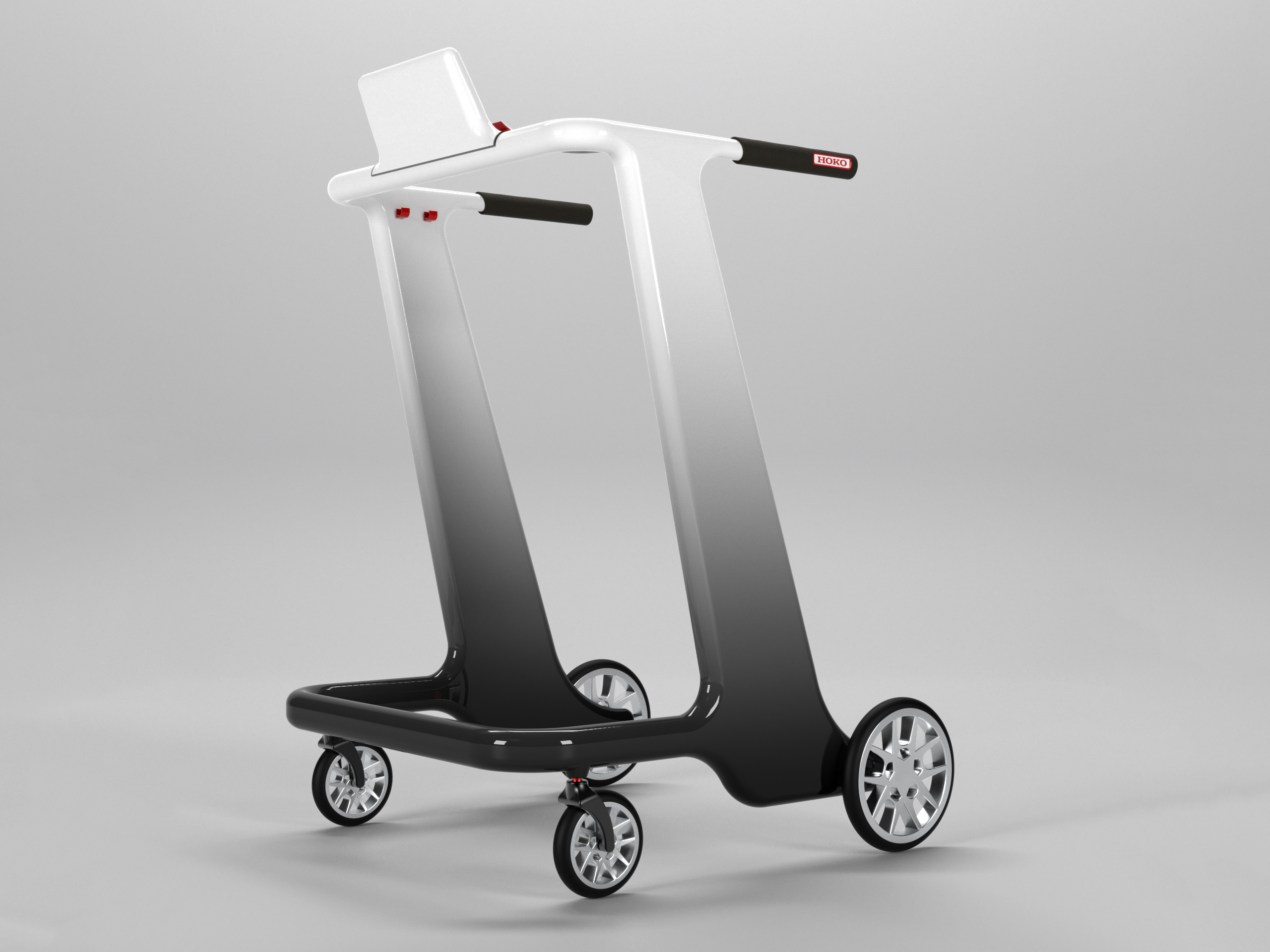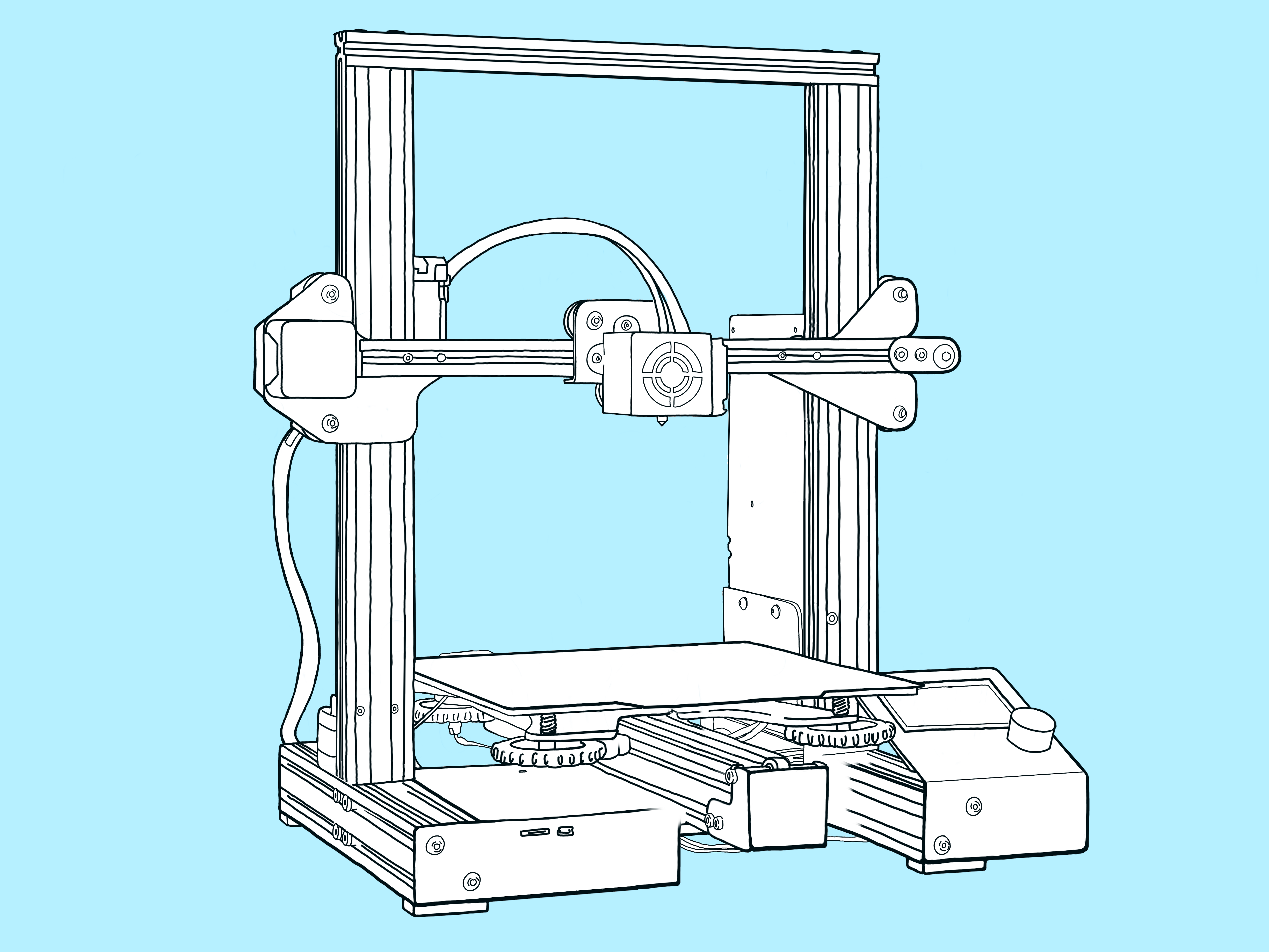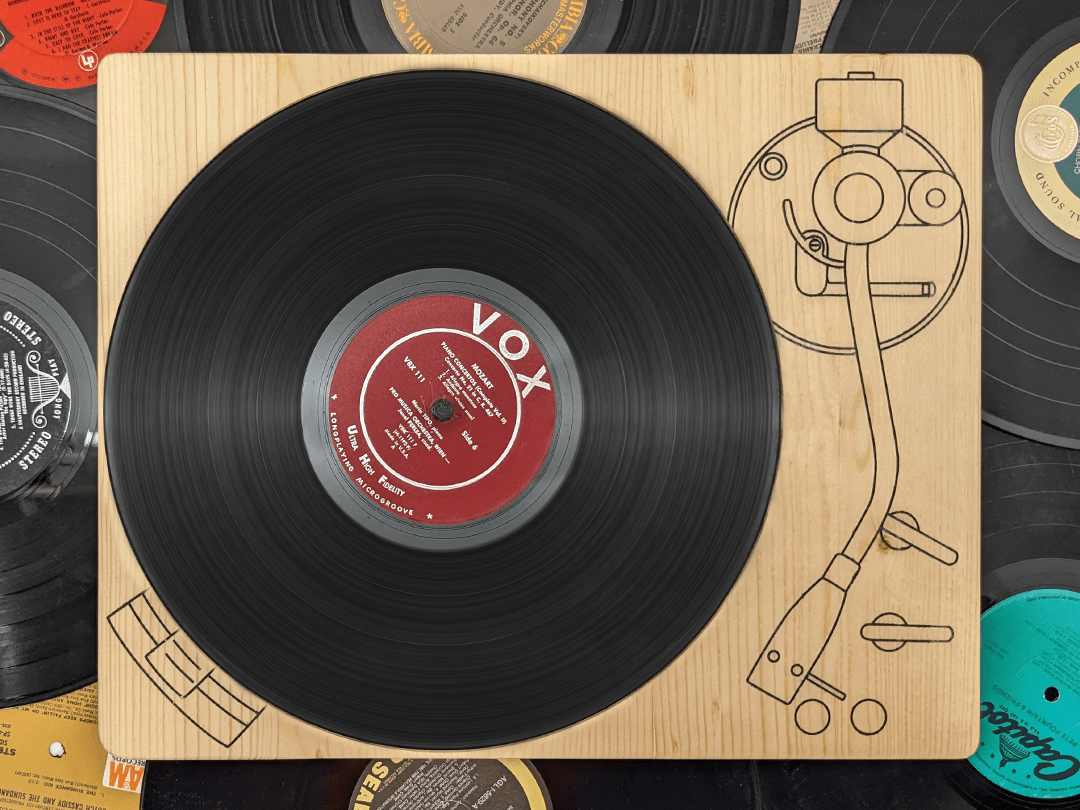Honda Trunk Shelf:
A Built-In Storage Space for Fragile Items
TIMELINE: 16 weeks
INDIVIDUAL & GROUP PROJECT: Hattie Carr, Jackie Brandon, Korene Embrack and I
OBJECTIVE: As part of our Senior Thesis Project sponsored by Honda, we were asked to research the customer grocery pick-up experience and provide an improved comprehensive concept that assists in the vehicle cargo area.
Instructed By: Dr. Sébastien Proulx & Will Nickley
PROJECT BACKGROUND
As grocery shopping is an essential errand in our lives that, in the US, requires us to use our cars, Honda sees an opportunity to improve their customers' shopping experience, especially in curbside pickup. But what is curbside pick-up?
WHAT IS CURBSIDE PICKUP?:
At first glance, curbside pickup involves a customer who parks in a designated location at the grocery store. Then the customer sits in their vehicle while a curbside associate comes out and loads the groceries into the vehicle. I knew there had to be more to this process so I decided to begin my research by getting a closer look.
RESEARCH PHASE
UNDERSTANDING CURBSIDE PICKUP:
To get a full picture of what the curbside grocery pickup process looks like, I started my research by observing curbside pickup at five different Kroger locations and picking up my own groceries through curbside pickup twice.
Through these different experiences, the full process could be broken into five steps:
By understanding this process, it was apparent that as the designer, I have to consider how changes to the vehicle not only affect the vehicle owner but also how it would affect the curbside workers.
Without the workers, there would be no curbside pickup. So, I decided to focus the rest of my research on the curbside loading process.
CONVERSATIONS WITH CUSTOMERS:
In doing two more first-hand curbside pickups, I learned that one of the big questions the curbside associates ask is, “Where would you like your groceries to be placed in your vehicle?”
This got me thinking: how do people decide where to place their groceries when not using curbside pickup? I decided to ask 15 customers why they chose the location they did as they were loading their groceries. A response from a customer loading his groceries into his backseat stood out to me:
SURVEYING CURBSIDE ASSOCIATES:
It concerns me that customers don’t trust their trunks because when I surveyed 25 curbside workers across the US, 92% said they place the groceries into the truck when a location isn’t specified.
OBSERVING & INTERVIEWING CURBSIDE ASSOCIATES:
Another concern I uncovered through my observations was that customers often have stored items in their trunks that the curbside associates had to load around. Additionally, I took the opportunity to interview two lead curbside associates who mentioned that curbside associates are also under some tight time expectations when they load.
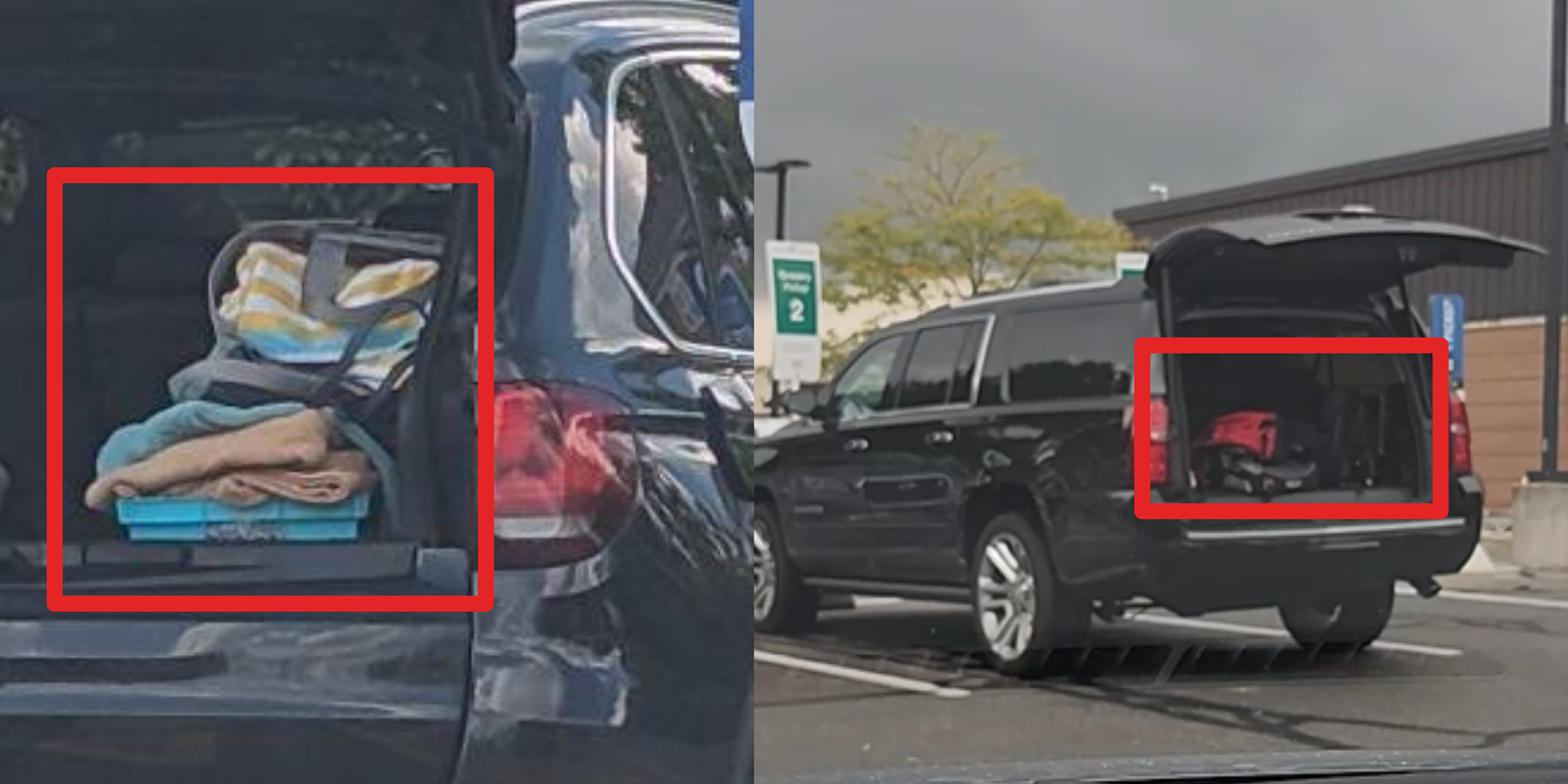
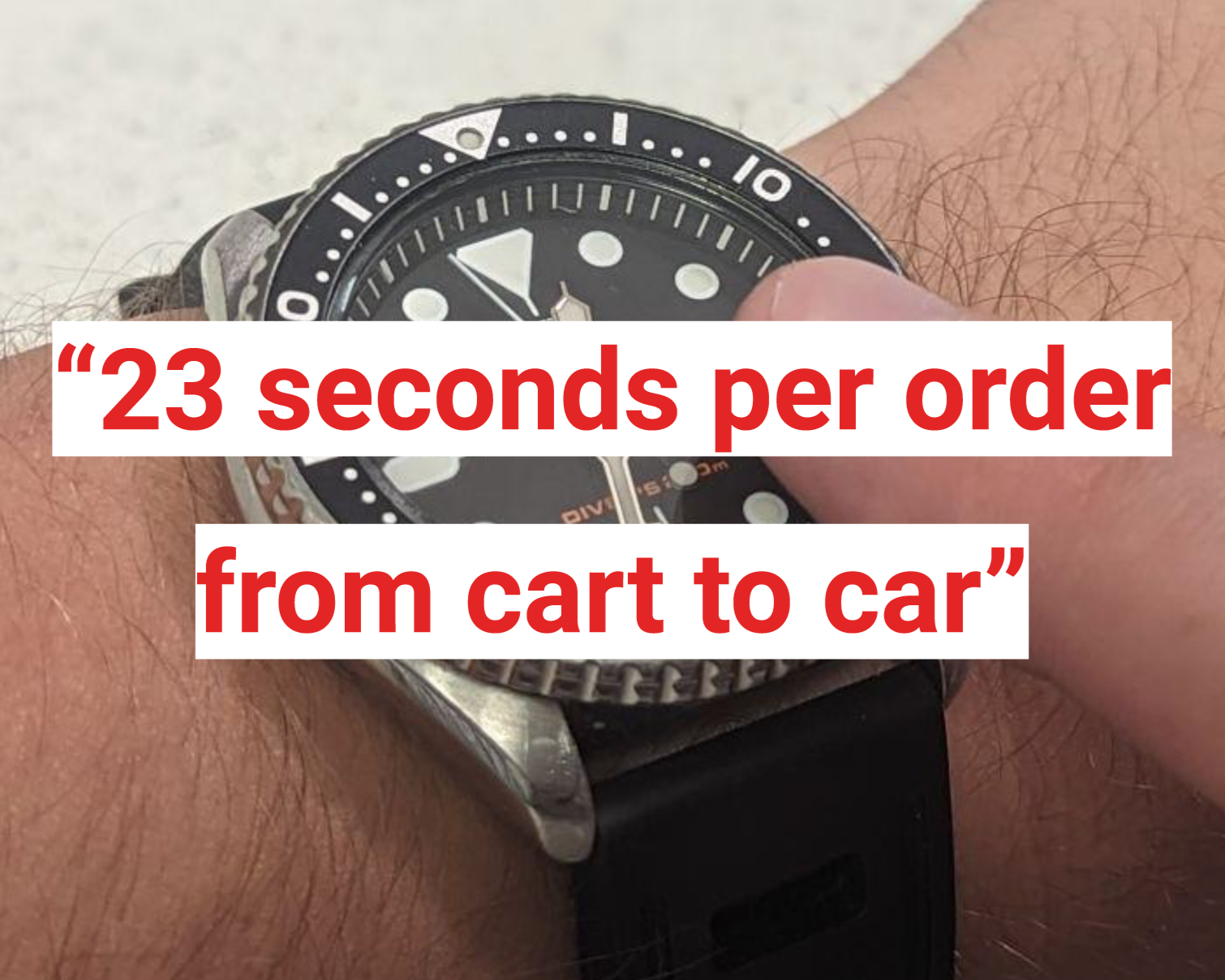
RESEARCH TAKEAWAYS:
Based on everything I learned throughout the different portions of my research, I came to three main takeaways:
PROJECT PARAMETERS:
From those takeaways, I developed a project statement and parameters to assess my concepts against:
IDEATION PHASE
MAPPING:
With my project parameters set, I used a knowledge-to-concept map to explore what concepts came to mind when revisiting what I learned during my research phase. From my mapping, I came up with four base concepts/terms (dividers, vertical space, hooks, and holders).
I then used mind mapping with small sketches to explore ideas that either connected directly to these concepts or were a combination of these base concepts.
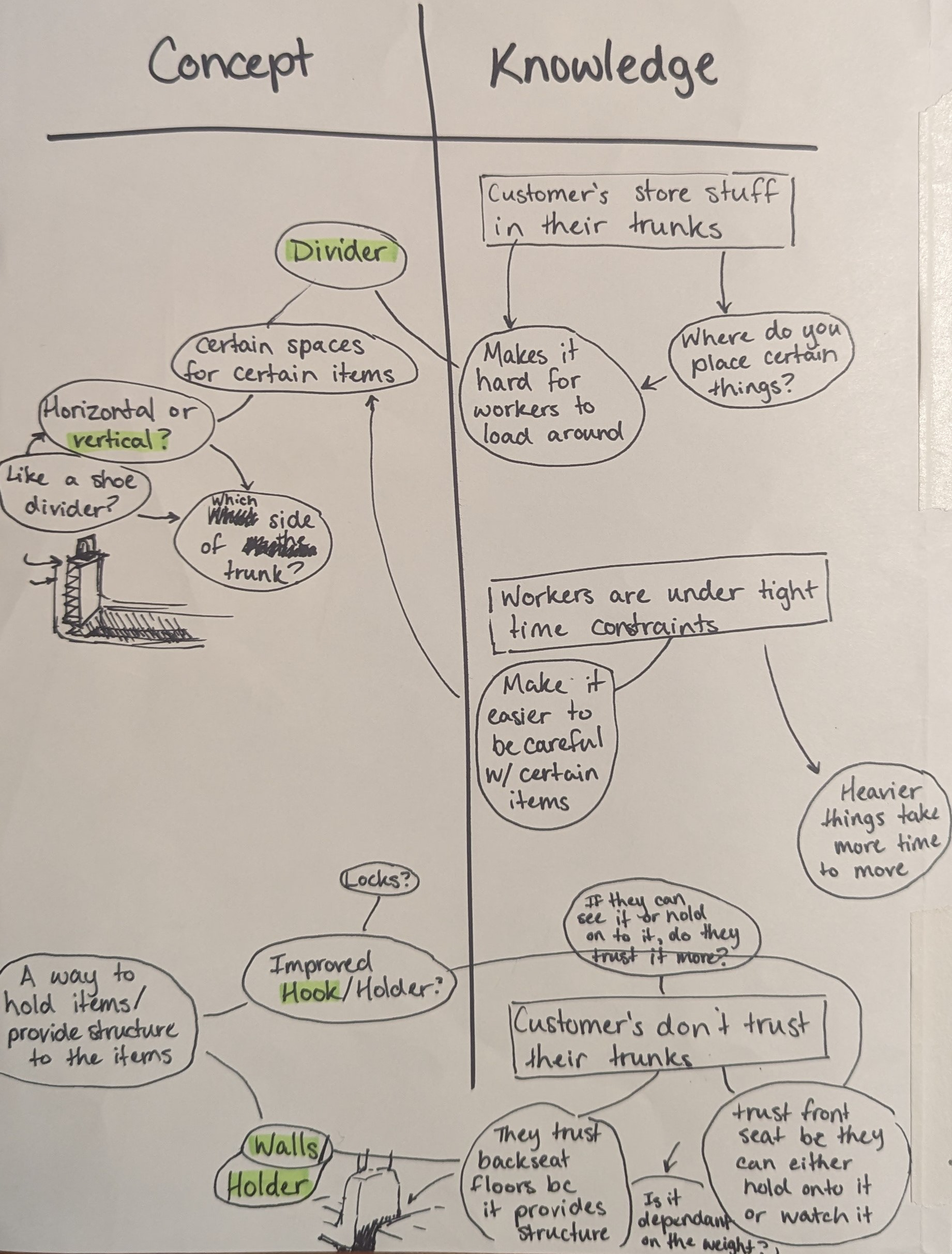

REFINED SKETCHES:
From mind mapping, I selected three concepts that I believed could meet my project parameters; I titled those concepts: Texturized Shelf, Rod Holder, & Bag Carrier Holder
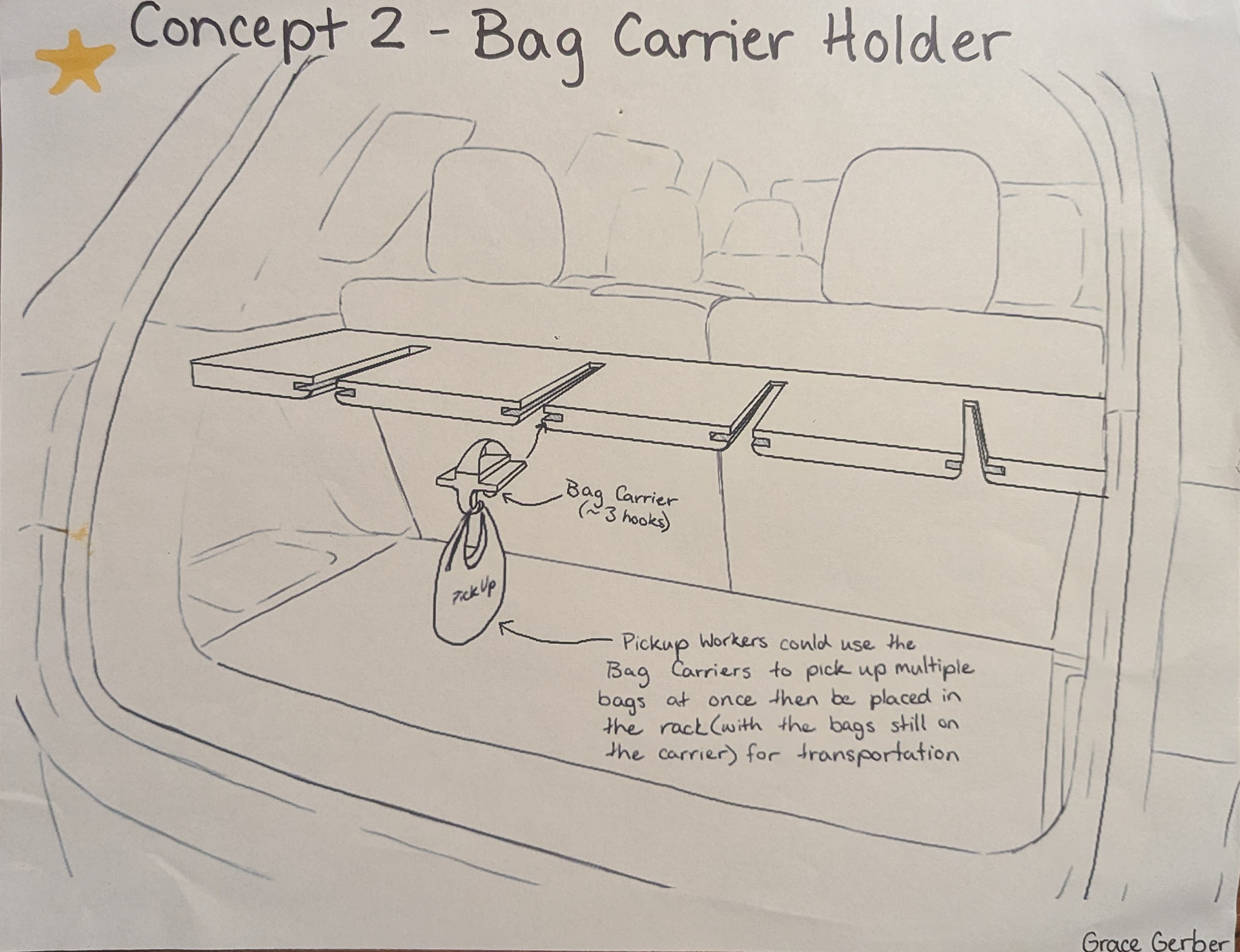
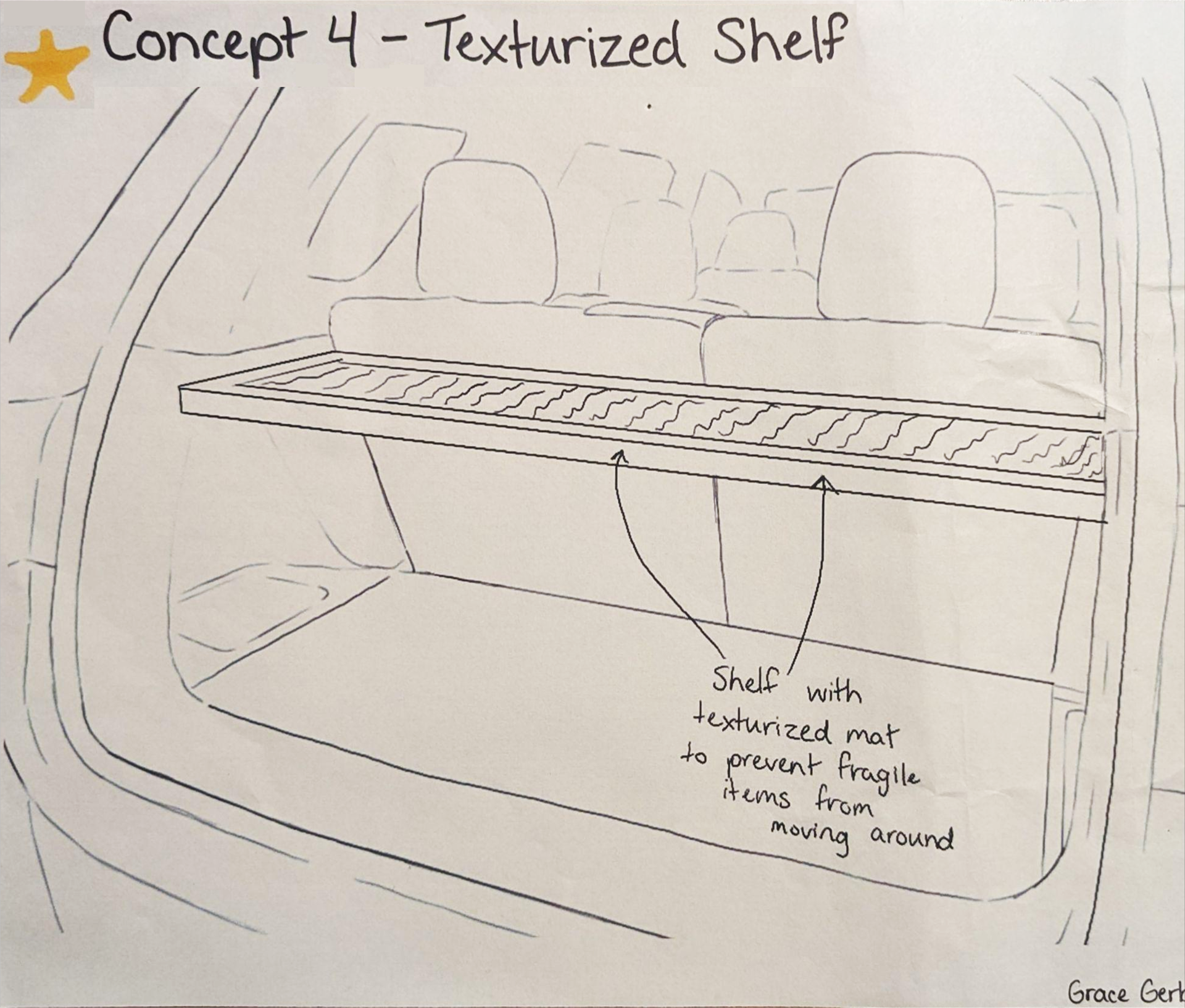
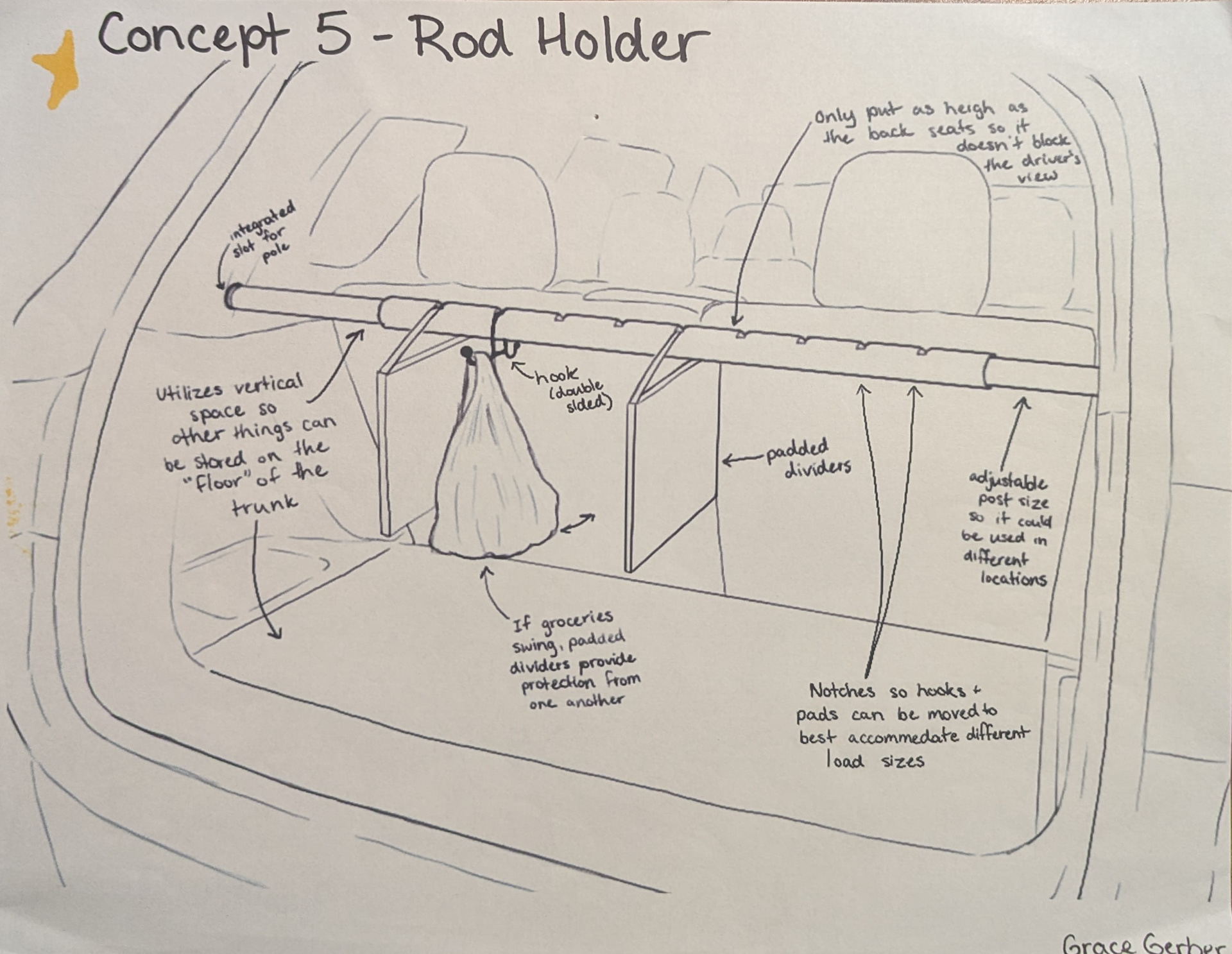
TESTING & REFINEMENT PHASE
FORMATIVE ASSESSMENTS:
To evaluate which concept to move forward with, we performed formative assessments to test out specific features of each concept.
As a team, the Honda group decided to set testing standards by creating a driving route with common driving conditions and a standard grocery list based on the most commonly bought groceries of different sizes.
When testing out the Rod Holder/Bag Carrier Holder concepts, I found that there weren't the right conditions in the trunk for these concepts to work.
To test out the Texturized Shelf, I used cardboard to test out different sizes and heights, and I then used wood to build a sturdy mock-up. Using the mock-up to pick up groceries and drive the route gave me clear signs to move forward with the concept.

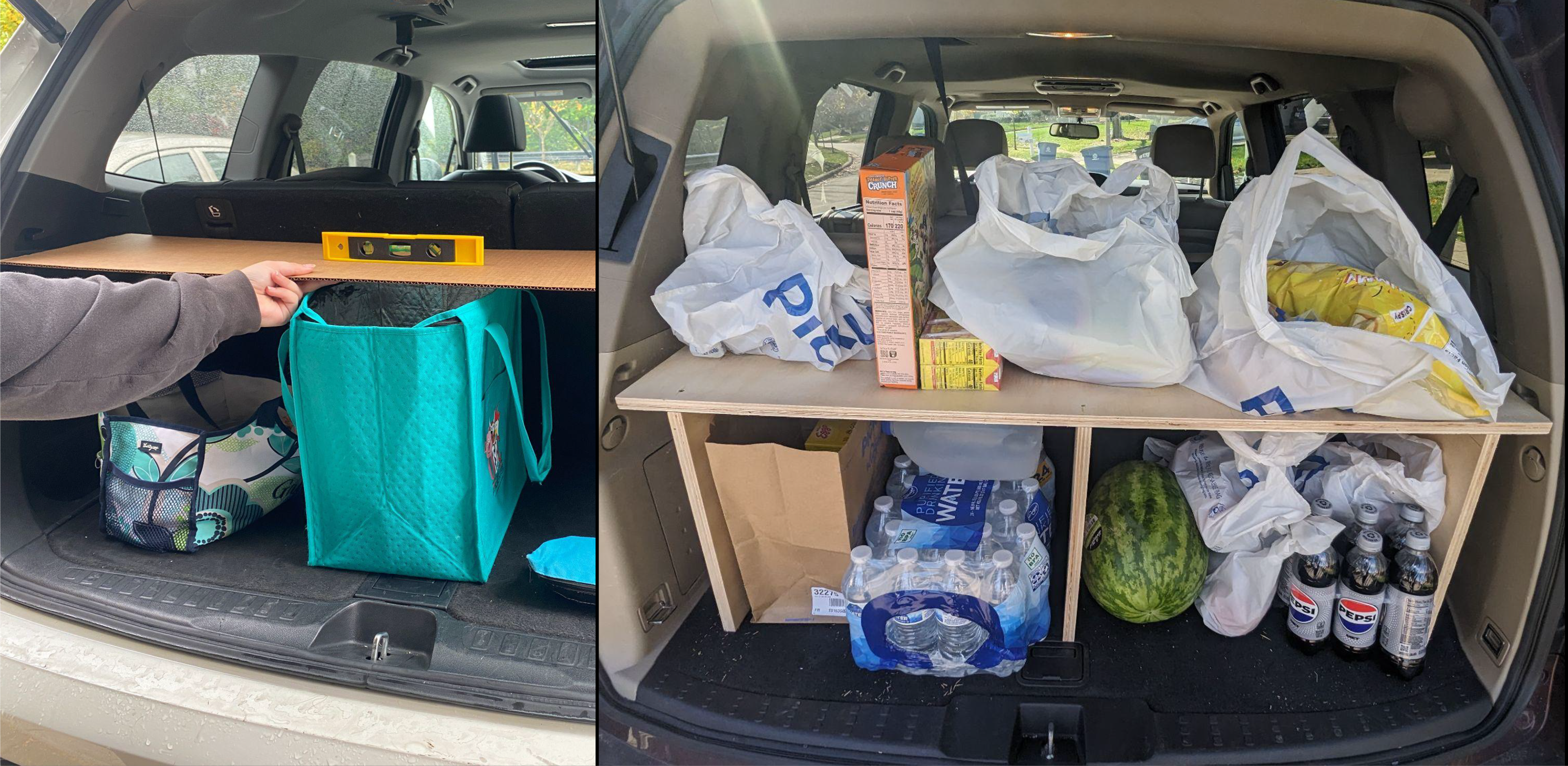
CONCEPT REFINEMENT:
While considering what additional quality the shelf surface would have, I began exploring what I wanted the user's interaction to look like with the shelf. I eventually came to the conclusion that the shelf should be pulled up toward the user. To explore this at first, I drew a high-fidely sketch of the shelf.
To explore how it might mechanically work, I used 3D modeling to build out the shape. I landed on the back of the seat stretching out and allowing the shelf to be pulled out from the seat. Through modeling, I also decided that an inner section of the shelf would drop down when the shelf was pulled out, creating a specific area on the shelf for fragile items.
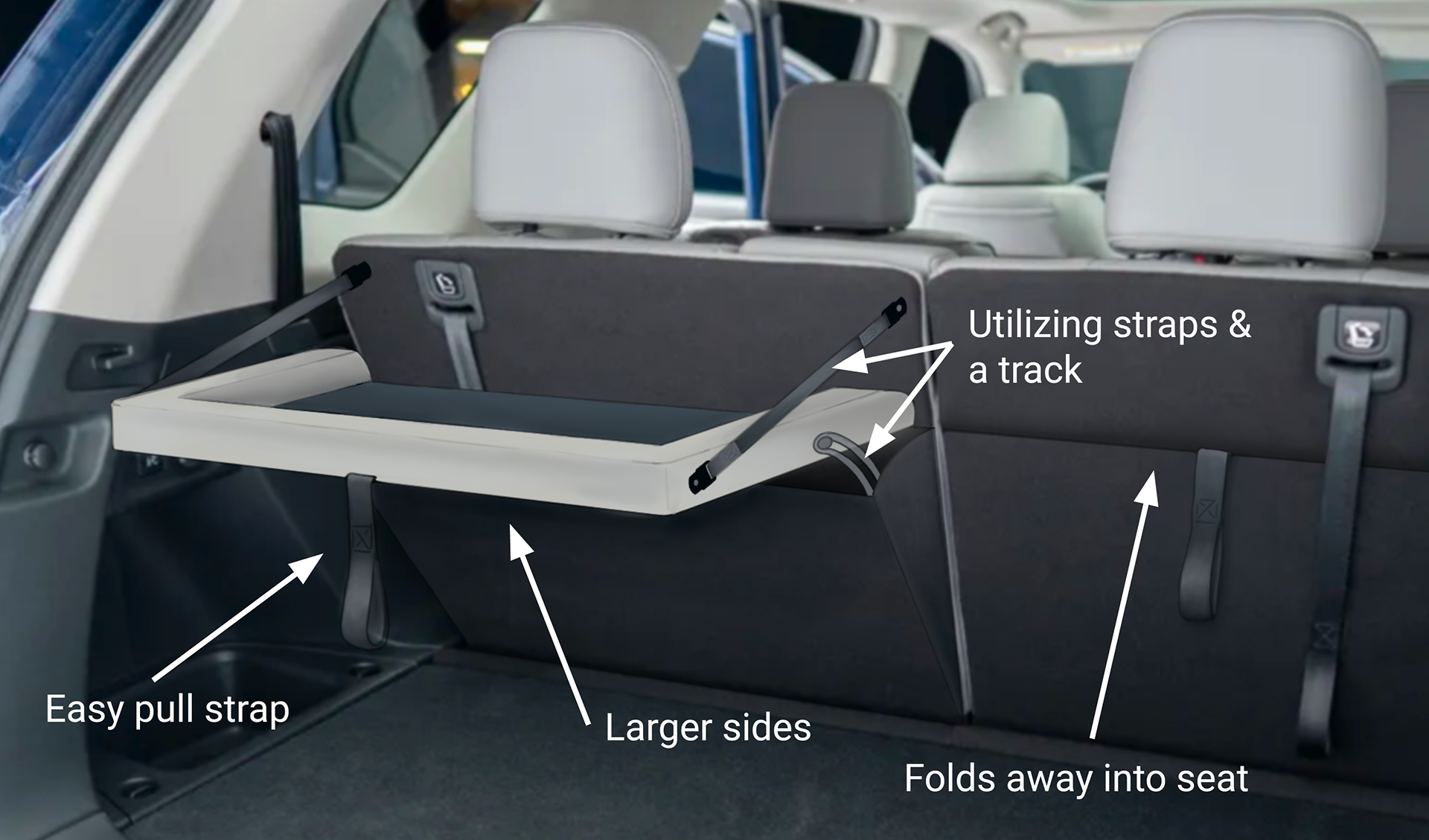
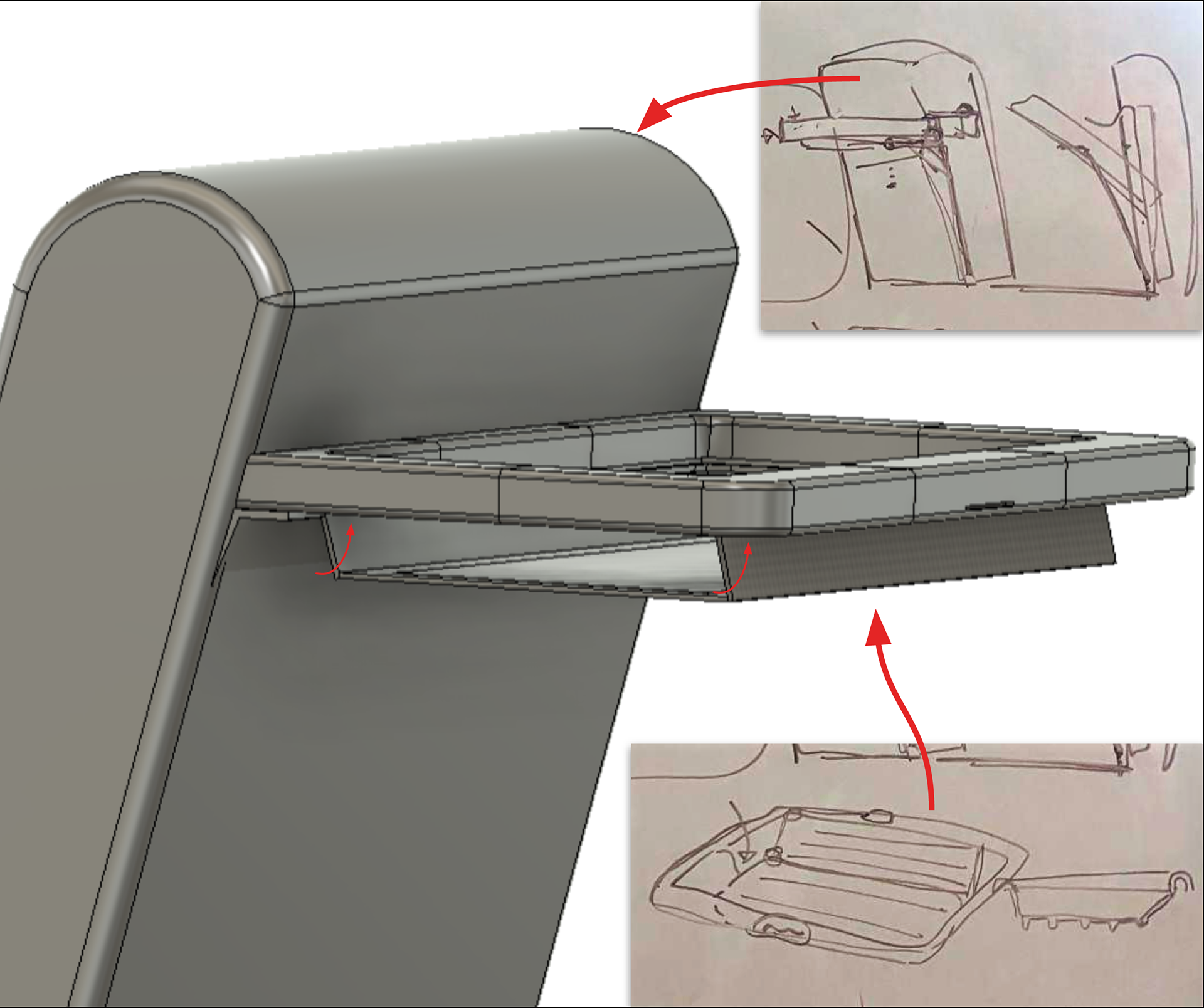
FINAL DELIVERABLES
WORKS-LIKE MODEL:
Based on my 3D model of the shelf, I created a prototype out of cardboard, box tape, and rubber bands to demonstrate how the shelf would work. The video on the right shows how the Trunk Shelf is fast and easy to deploy, has a drop-down surface to provide extra security for fragile items, and hides away in the 3rd-row seats.
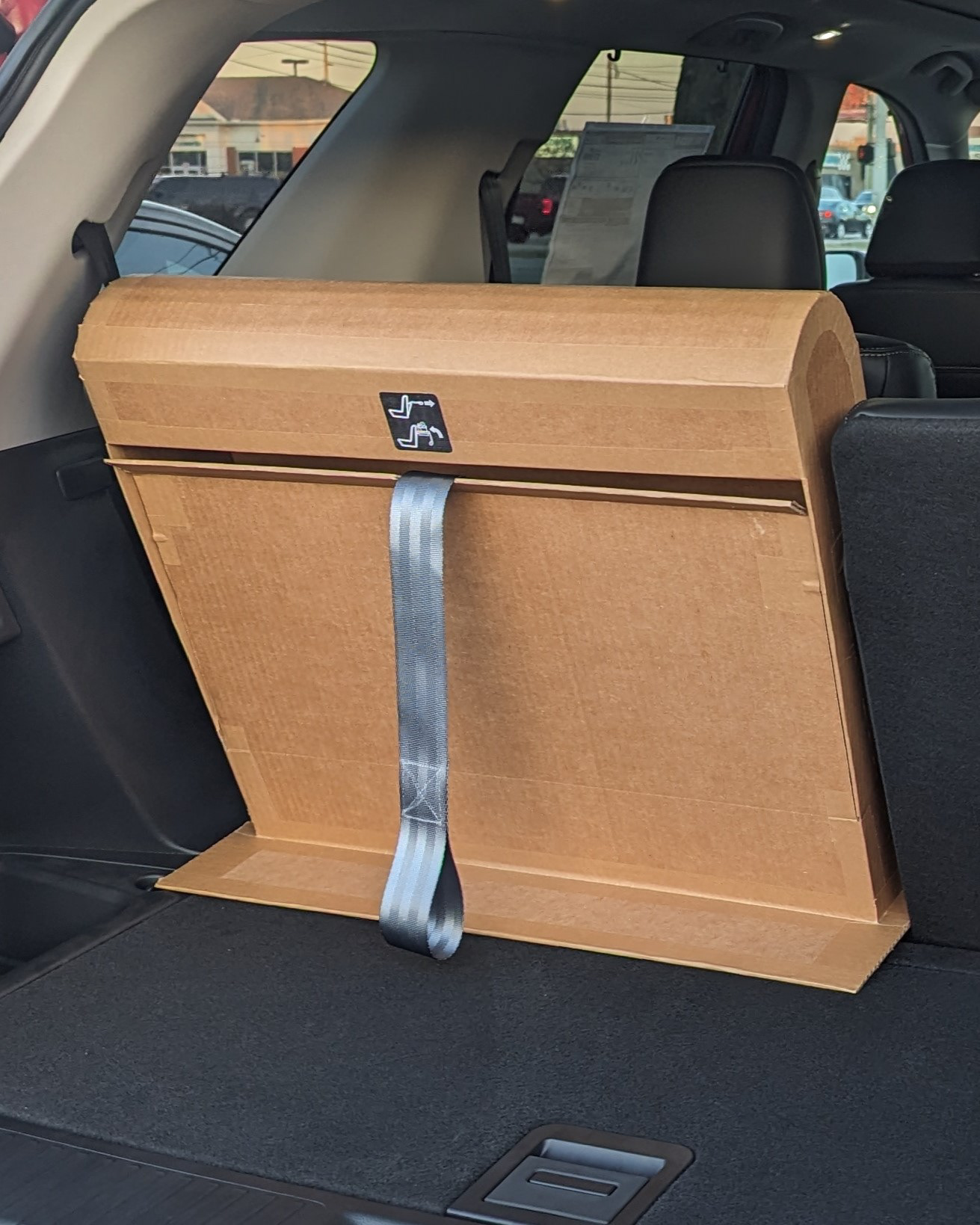

LOOKS-LIKE MODEL:
To demonstrate what the Trunk Shelf would look like, I created a 3D-printed frame (the sandblasted frame) with a drop-down section made of mesh and ABS plastic (the texturized sides) and a seat belt webbing strap.


Short Concept Description:
“To address the concerns of groceries being damaged within the trunk during loading and transportation, we have the Honda Trunk Shelf. The Honda Trunk Shelf creates a safe space for fragile items to be placed above the heavier items stored on the trunk floor. The Trunk Shelf’s features help prevent groceries from being damaged no matter who loads your Honda.”
HONDA GROCERY ASSIST:
As a part of the Honda group, each person focused on a different step in the grocery shopping experience where a car was involved. In doing so, we were able to propose a system where, depending on the type of vehicle, a user could use a combination of our products to help the entire grocery shopping journey instead of just one aspect. We named this system Honda Grocery Assist.


